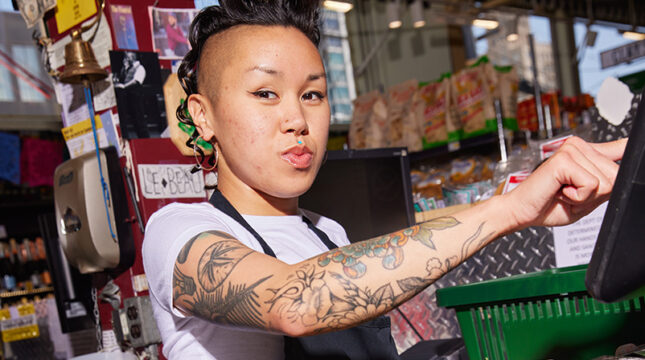1. Hire extra staff
Holiday retail planning starts with a team to meet your customers’ needs.
Industries like retail can struggle to find candidates. If you need to ramp up staffing, it may take longer than usual to find the help you need.
Jeff Moriarty, marketing manager for Moriarty’s Gem Art, his family’s jewelry business, recommends bringing on extra staff before you really need them so they have a chance to learn before the holiday rush.
2. Prepare a holiday marketing and promotion plan
If you want a slice of the holiday shopping pie, you need to attract new and existing customers with marketing and promotions. The plan that’s right for you depends on your business and your customers.
Some ideas for holiday promotions include:
- Interactive email and social media campaigns
- Product discounts
- Paid online, print or radio advertising
- Bundling products for a higher ring on every purchase
- Loyalty or rewards programs to encourage repeat sales
Email marketing is one of the most effective ways to reach existing customers. To promote a successful holiday campaign, collect customer contact information throughout the year.
Moriarty estimates that about 25% of their company’s sales each holiday season are from customers who’d already visited their website that year. “It’s so important to think about the people that were coming three to four months before the holidays,” he says.
3. Stock up on inventory
If you don’t want to tell your customers the gift they were shopping for is out of stock, merchandise planning is essential.
Order your holiday inventory early to avoid disappointed customers later. Analyze your budget, previous sales and in-demand product trends to decide what and how much to order. Be careful not to over-order seasonal items you can’t sell year-round.
4. Optimize your website
Online e-commerce sales show no sign of slowing. A few minor tweaks to your public-facing website can make a big difference to your customers. Take a look at the design and usability of your online store elements such as:
- Shipping. Customers shopping for the holidays want to make sure their gifts arrive on time. “They want to know if they’re going to get it by Christmas,” Moriarty says. “We have supporting language that shows how long it takes to ship and when they’re guaranteed to receive it by.” Consider adding language to your site that lets people know the last day they can order to receive gifts in time for the holiday.
- Payments. Credit card payments are standard for online orders, but customers like to have options. Allow them to use digital wallets like Apple Pay or Google Wallet, or peer-to-peer (P2P) services like Venmo and PayPal. Give them more ways to pay for flexibility and a better mobile experience.
- Create a holiday gift guide. Sometimes, customers visit your site to browse, and they won’t know the perfect gift until they see it. Promote a holiday gift guide that highlights popular items or merchandise. If you give your customers ideas for the perfect gift, it may help increase sales.
- Streamline checkout. Don’t require customers to create an account or to save their personal information to make a purchase. If they start checking out but don’t finish, send a shopping cart abandonment email to help convert more sales.
5. Select packaging, shipping and delivery options
Take a hard look at your operations and fulfillment strategy before the holiday rush hits. These processes include:
- Packaging. Make a plan for how you’ll optimize merchandise packing for shipping. When you think about protecting products and paying by weight, you’ll need to evaluate boxes, envelopes, poly mailers and more. Different products may require different materials.
- Shipping. Depending on the volume of orders you need to ship, you may be able to handle packaging and shipping internally. If it’s too much to handle on your own, work with a third-party logistics partner or dropshipper to free up team resources.
- Pick-up and delivery. Some customers don’t want to wait a week or two to receive their order — or pay for shipping. Consider same-day product fulfillment options such as buy-online-pick-up-in-store (BOPUS) or in-store pick-up.
6. Adjust your return policy
Holiday shoppers often buy gifts they won’t give for weeks. A 30-day return policy might deter someone from buying early. Consider adjusting your policy to allow a longer return window for items bought between November 1 and December 24.
How NEXT helps small retail and e-commerce businesses
At NEXT, you can choose from multiple types of retail business insurance to get coverage that fits your unique needs. Our customized insurance packages are right-sized and flexible.
Get a quote, review policy options, see pricing and buy online in less than 10 minutes. After you pay your premium, you can access your certificate of insurance right away, and view your policy 24/7 via web or app.
If you have questions, our licensed, U.S.-based insurance professionals are ready to help.
Start your free quote with NEXT today.







